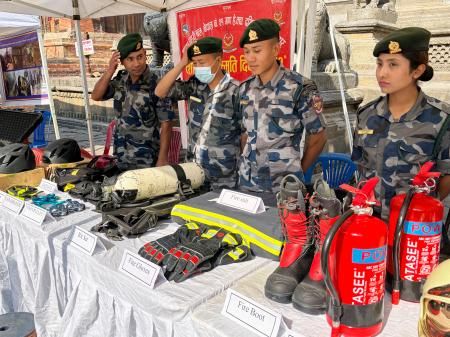Nepal's Earthquake Legacy: A Decade Later – Resilience, Reconstruction, and Remaining Challenges
Ten years after the devastating 2015 Nepal earthquake, the nation continues to grapple with the long-term impacts of this catastrophic event. While significant progress has been made in reconstruction and recovery, many challenges remain, highlighting the complex and enduring legacy of this natural disaster. This article explores Nepal's journey since the earthquake, examining the successes, setbacks, and ongoing efforts towards building a more resilient future.
The Scars Remain: Remembering the 2015 Earthquake
The 7.8 magnitude earthquake that struck Nepal on April 25th, 2015, and its subsequent aftershocks, caused widespread devastation. The death toll exceeded 9,000, with thousands more injured. Entire villages were reduced to rubble, and iconic historical sites, like Kathmandu's ancient temples, suffered irreparable damage. The earthquake's impact extended far beyond immediate casualties, triggering landslides, disrupting infrastructure, and triggering a humanitarian crisis of immense proportions.
Key Impacts of the 2015 Earthquake:
- Massive loss of life and displacement: Hundreds of thousands were left homeless, forcing mass migrations and straining already limited resources.
- Widespread infrastructure damage: Roads, bridges, schools, and hospitals were severely damaged, hindering rescue efforts and long-term recovery.
- Economic disruption: The earthquake dealt a significant blow to Nepal's economy, impacting tourism, agriculture, and other vital sectors.
- Psychological trauma: The emotional toll on survivors continues to this day, with many struggling with PTSD and other mental health challenges.
A Decade of Reconstruction: Progress and Setbacks
The international community responded swiftly to the crisis, providing substantial financial and humanitarian aid. Nepal launched ambitious reconstruction efforts, focusing on rebuilding homes, schools, and hospitals. However, the process has been fraught with challenges:
- Bureaucratic hurdles and corruption: Slow and inefficient bureaucratic processes hampered the effective allocation and utilization of funds. Allegations of corruption further slowed progress.
- Lack of skilled labor and resources: The scale of the damage exceeded the capacity of Nepal's construction industry, leading to delays and shortages.
- Geographical challenges: Accessing remote and mountainous regions proved difficult, delaying the delivery of aid and hindering reconstruction efforts.
- Political instability: Political instability and shifting priorities within the Nepali government also contributed to delays.
Building Back Better: Lessons Learned and Future Strategies
Despite the setbacks, Nepal has made demonstrable progress in rebuilding infrastructure and improving disaster preparedness. The earthquake has spurred crucial lessons:
- Improved building codes and construction techniques: New building codes are being implemented, emphasizing earthquake-resistant design and construction.
- Enhanced disaster preparedness and response mechanisms: Nepal has invested in early warning systems and improved emergency response capabilities.
- Community engagement and participation: The importance of community involvement in reconstruction efforts is increasingly recognized.
- Focus on sustainable development: Reconstruction efforts aim to integrate principles of sustainability and resilience, ensuring long-term stability.
Looking Ahead: The Ongoing Journey Towards Resilience
Nepal's journey of recovery is far from over. The long-term consequences of the 2015 earthquake continue to impact the nation, requiring sustained commitment and international collaboration. The focus now shifts towards:
- Addressing the long-term psychological impacts on survivors: Providing access to mental health services is crucial for fostering community healing.
- Ensuring equitable access to resources and opportunities: Addressing socio-economic inequalities exacerbated by the earthquake is essential.
- Strengthening institutional capacity and governance: Improving transparency and accountability in government operations is vital for effective long-term recovery.
The 2015 Nepal earthquake stands as a stark reminder of the devastating power of nature and the importance of preparedness. While the physical scars are slowly healing, the legacy of this tragedy continues to shape Nepal's future. The nation’s unwavering spirit, coupled with continued international support, provides hope for a more resilient and prosperous Nepal in the years to come.
Call to Action: Learn more about organizations working on Nepal's earthquake recovery and consider supporting their efforts. [Link to relevant charity/organization]
